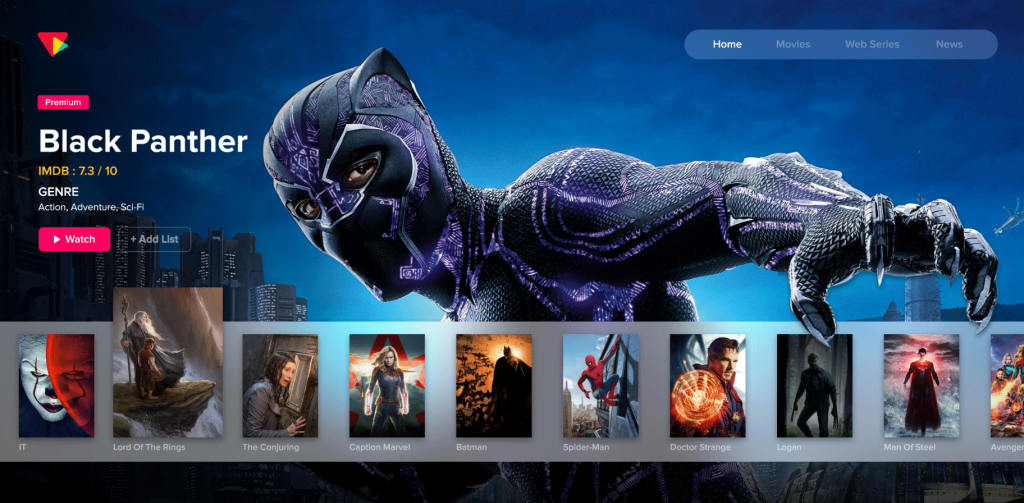The Definitive Guide to Apollo Group Tv
The Definitive Guide to Apollo Group Tv
Blog Article
Top Guidelines Of Apollo Group Tv
Table of ContentsThe Main Principles Of Apollo Group Tv Apollo Group Tv Fundamentals ExplainedThe 7-Second Trick For Apollo Group TvApollo Group Tv Things To Know Before You Buy
In this scenario, instead of having three-minute industrial areas throughout a 30-minute tv program, television programming might transform to one where a customer will certainly be called for to have a monthly membership, to ensure that they cen sight targeted banner advertisements. This sort of marketing already happens on the net, and the amount of data tv firms accumulate permits them to do much the same.Discuss the impact of enrollers on program content. Describe the significant fads amongst the broadcasting and wire networks. When tv remained in its infancy, manufacturers designed the new medium on radio. Popular radio shows such as police drama Dragnet and western cowboy collection Gunsmoke were adjusted for tv, and new TV shows were funded by solitary marketers, equally as radio programs had been.
Today, the television industry is much more complicated. Programs are sponsored by multiple marketers; programs is managed by major media conglomerates; and the 3 major networks no more dominate the airwaves however rather share their audiences with numerous wire networks. Several factors make up these patterns within the market, consisting of technological developments, government regulations, and the production of new networks.

The Greatest Guide To Apollo Group Tv
Established in 1969, (PBS) created out of a report by the Carnegie Payment on Educational Television, which checked out the role of instructional, noncommercial tv on society. Public tv was additionally meant to give universal accessibility to television for audiences in country areas or viewers who can not afford to pay for personal television solutions.
The period between 1950 and 1970 is traditionally identified as the. Apart from a little part of airtime regulated by public television, the three major networks (recognized as the Big 3) dominated the television industry, collectively representing even more than 95 percent of prime-time watching. In 1986, Rupert Murdoch, the head of multinational company News Corp, introduced the Fox network, challenging the dominance of the Big 3.
Targeting young and minority target markets with shows such as Buffy the Vampire Slayer, Moesha, Dawson's Creek, and The Wayans Bros., the new networks wanted to attract stations away from their old network affiliations. Nevertheless, instead of duplicating the success of Fox, UPN and WB battled to make an influence. Unable to attract many associate stations, the two recently established networks reached fewer households than their larger rivals due to the fact that they were unobtainable in some smaller cities.
This decision led the way for the advancement of cord motion picture channels, contributing to the exponential growth of cable in the 1980s and 1990s. apollo tv group. More deregulation of wire in the 1984 Cable Communications Plan Act removed restrictions on cable television rates, enabling drivers to bill what they desired for wire services as long as there was effective competitors to the solution (a criterion that over 90 percent of all cable markets could meet)
Apollo Group Tv Fundamentals Explained

Having created the first "superstation," Turner increased his world by founding 24-hour information network CNN in 1980. At the end of the year, 28 nationwide programming solutions were readily available, and the cable change had actually started. Over the next decade, the sector went through a duration of quick development and appeal, and by 1994 audiences might select from 94 standard and 20 premium cord services.
Number 9 - https://www.pageorama.com/?p=apollogtv01.16 Boosted competitors from wire networks has actually created a consistent decline in the networks' audience scores. Throughout the 1950s, the expense of producing a single television show enhanced as shows ended up being longer and manufacturing prices rose. Sponsorship on network tv moved from single sponsorship, in which a program visit our website was completely supported and created by one advertiser, to numerous sponsorship, in which advertisers acquired 1- or 2-minute places on the show
Select one of the Big Four networks and publish out its regular shows schedule. Watch the network's prime-time programs over the training course of a week, noting the target market for each show.
Apollo Group Tv - The Facts

Linear TV, often described as conventional program TV, incorporates cord and satellite television. It's called "direct" because web content complies with a predetermined programs schedule, unlike on-demand content which the individual viewer decides to watch based on their very own choices and timetable. So, when you ask, "What is straight television?", believe of it as the classic way of watching television that has actually been around for years.
Report this page